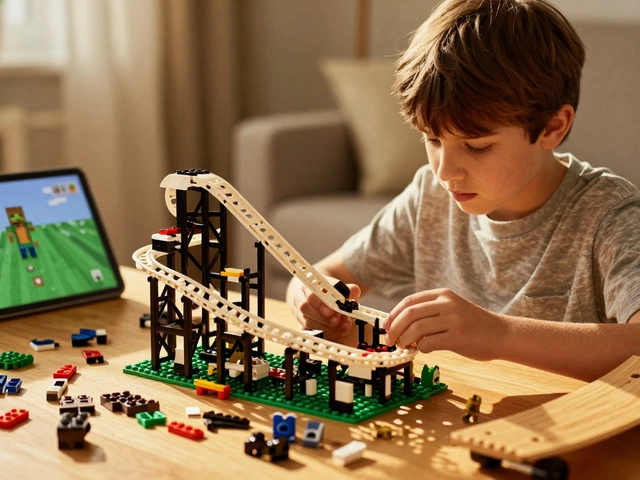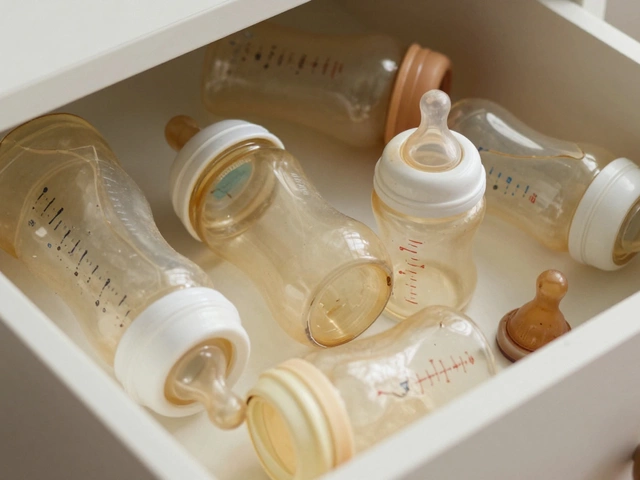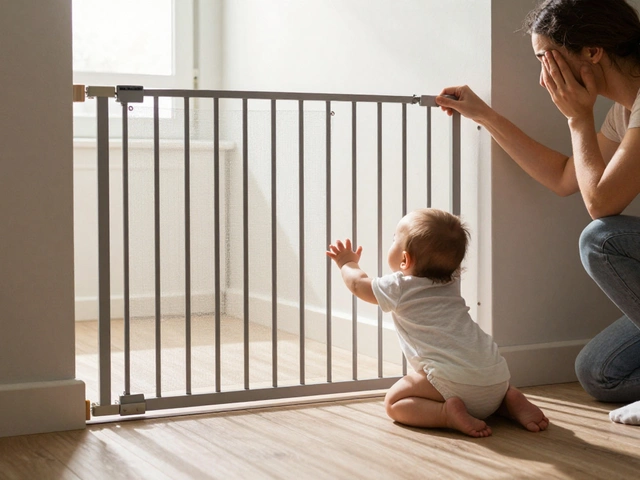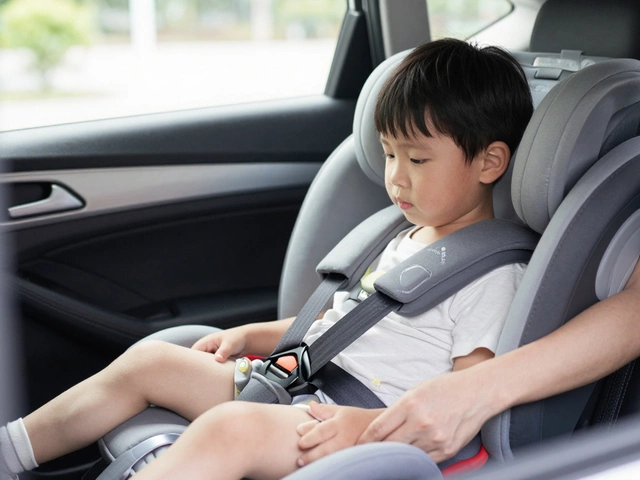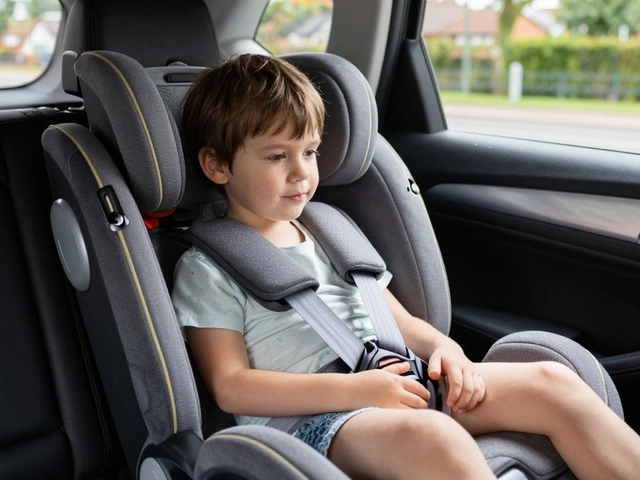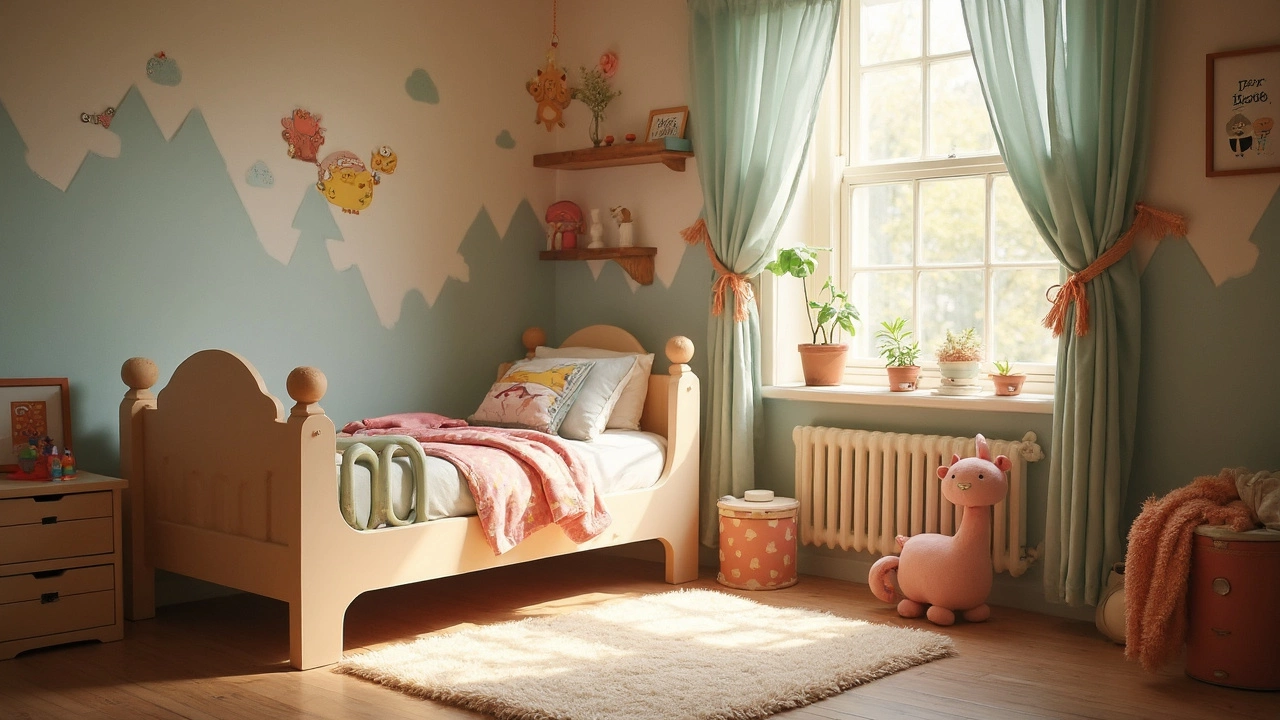
Switching your little one from a crib to a bed can feel like a big step. But don't worry, it's a part of growing up! A three-year-old's bed isn't just about size; there's a lot more to consider. First up: safety. Kids are naturally curious and can find themselves in all sorts of situations. So, it's super important to pick a bed that keeps them safe during their adventures.
Next, think about the kinds of toddler beds available. You could go with a small crib-sized bed or even a twin bed with fun features like guardrails. Plus, there's the mattress to think about—comfort is key for good sleep! Personalized options can make the bed feel like your child's own special place, helping them transition from their trusty crib.
- Why It's Time for a Big Bed
- Safety First: What to Avoid
- Types of Toddler Beds
- Choosing the Right Mattress
- Personalizing Your Kid's Bed
- Transition Tips to Make It Smooth
Why It's Time for a Big Bed
Your toddler officially moving to a toddler bed is a huge milestone, right? If you’re noticing that your little one keeps trying to climb out of their crib, it might be a good sign they're ready for a change. At around three years old, many kids start to appreciate the independence and comfort of a new bed.
Think about it: your growing kid now needs more room to stretch out during sleep. Plus, choosing a bed that's closer to the ground compared to their crib can prevent those midnight escape attempts from turning into a full-on tumble.
A kid's bed offers more than just a safe place to sleep. It's a whole new world of bedtime routines and morning independence. Kids love having control over their newfound space. That means more freedom to grab their favorite book early in the morning or snuggling back under the covers if they know it's not quite wake-up time yet.
| Age | Bed Transition |
|---|---|
| 18-36 Months | Crib to Toddler Bed |
| 4+ Years | Transition to Twin Bed |
Timing the switch in bed is different for every family. If your toddler is consistently waking up or moving around their crib restlessly, it's a clue they might appreciate a little more space. If you haven’t already, it might be time to explore the variety of toddler bed options that can make sleeping a cozy, safe, and fun experience!
Safety First: What to Avoid
When choosing a toddler bed for your three-year-old, safety is a top priority. After all, you want to ensure that both you and your little one get a restful night's sleep without worrying about potential hazards.
First things first, avoid beds with sharp edges or corners. Kids are notoriously bouncy and those corners are accidents waiting to happen. Look for beds with rounded edges instead.
Another big no-no is gaps between the mattress and the bed frame. Little hands can get trapped, which is a nightmare for both you and your child. Make sure the mattress fits snugly in the frame.
Let's talk about guardrails. They might seem unnecessary, but trust me, they're not—especially for active sleepers. Avoid beds without these safety rails. They're crucial in preventing those unexpected nighttime tumbles.
- When it comes to the height of the bed, keep it close to the ground. A lower bed reduces the risk of injury in case a tumble does happen.
- Steer clear of beds with elaborate designs like ledges or accessories kids could yank on. They might seem cute, but they can be risky.
- Consider the materials, too. Opt away from beds made with toxic finishes or paints—your child will be spending a lot of time here, even using their imagination to turn it into a spaceship or castle.
Lastly, if you're not buying a new mattress, check the condition of the one you have. It should be firm and supportive, with no worn-out springs popping up to poke your little dreamer.
Remember, keeping an eye out for these things can prevent a lot of bumps, scares, and tears. A safe bed is your child's gateway to happy dreams—and your peace of mind!
Types of Toddler Beds
When your little one is ready to move out of their crib, picking the right toddler bed can feel like a quest. But hey, you have options, and here's the 411 on some popular choices out there.
First up, let's talk about the classic toddler bed. It’s basically a smaller version of a twin bed, typically using the same mattress size as the crib. This is often a budget-friendly choice since you might already have the mattress. These beds usually come with built-in guardrails to keep those adventurous kiddos from rolling out in the middle of the night.
Then we've got convertible cribs. These are genius! They start as cribs and transform into toddler beds and sometimes even full-size beds. A little like Transformers but for sleeping. If you went this route with your crib, you're all set for the next step.
Fancy something a bit more fun? There are toddler beds themed in every possible way. Cars, pirate ships, princess castles—you name it. They spark imagination and give mileage out of bedtime storytelling. Just make sure the excitement doesn’t keep your kiddo up all night!
If you're thinking about the long haul, a twin bed is worth considering. They’re bigger, yes, but they can last through several growth spurts. Stick on some guardrails, and you're golden. Plus, your kid can cuddle up with you during storytime without all the squishing.
Lastly, we’ve got floor beds. Inspired by Montessori principles, these beds let kids get in and out all on their own, boosting independence. They’re usually lower to the ground, so no worries about falls. Just keep in mind, it's harder to fit storage under them.
Curious about the costs and popularity of these options?
| Type | Average Price Range | Popularity (%) |
|---|---|---|
| Toddler Bed | $50-$200 | 40% |
| Convertible Crib | $150-$400 | 35% |
| Themed Bed | $150-$500 | 15% |
| Twin Bed | $100-$300 | 8% |
| Floor Bed | $80-$250 | 2% |
Remember, whatever you choose, it's all about comfort, safety, and making bedtime something your little one looks forward to—or at least doesn't dread too much!

Choosing the Right Mattress
Getting the right mattress for your toddler's bed can make all the difference in their sleep quality, which we all know, can also affect how the rest of the family's day goes! A good night's sleep starts with a bed that feels just right, not too hard and not too soft.
When it comes to finding the perfect mattress for your three-year-old, think about comfort and support. You want something that supports their growing body—so look for a medium-firm mattress. It's cozy but not too squishy, helping their spines develop properly.
Now, let’s talk about materials. You'll generally find mattresses made of foam, latex, or even innerspring. Foam mattresses are a hit because they mold to your child’s body and are usually lighter, making bed sheet changing a bit easier. Latex is great for keeping allergies at bay, and innerspring mattresses often offer more bounce. If your little one likes to jump, that could be a fun extra! But if allergies are a concern, make sure it’s hypoallergenic.
Don't forget about size. A toddler bed mattress is usually 28 inches by 52 inches, just like their crib mattress. This makes transitioning easier and keeps things feeling familiar. And protect that investment—a waterproof mattress cover can save you from accidental spills and nighttime accidents.
Quality is key. A good mattress should last until they're ready for their next big bed. Most come with at least a 5-year warranty, which can offer peace of mind.
Here's a quick guide to help with what to look for:
- Medium-firm for comfort and support.
- Hypoallergenic if allergies are a worry.
- Waterproof cover for easy cleaning.
- Check for a warranty of at least 5 years.
Remember, when choosing a bed for your toddler, it’s not just about sleep. It’s about setting them up for a safer, more comfortable night, which means fewer reasons to come knocking on your door at midnight!
Personalizing Your Kid's Bed
Walking into your kid's room and spotting their personalized bed setup can make any parent smile. Having something special that's theirs can help your child feel more comfortable with the change from a crib to a toddler bed. It's all about creating a space that feels like their own little world.
One of the simplest ways to personalize your child’s bed is with themed beddings. If your child loves dinosaurs, unicorns, or even astronauts, there's likely a bedding set that’ll light up their eyes. These sets usually include sheets, comforters, and pillowcases that match the theme perfectly. The choice of theme helps the bed become a fun place instead of just a place to sleep.
According to child psychologist Dr. Lisa Hamilton, "Kids thrive in environments where they feel a sense of ownership and identity. Personalizing their sleeping area boosts their confidence and fosters independence."
"Kids thrive in environments where they feel a sense of ownership and identity." - Dr. Lisa Hamilton
Don’t forget about the extras, like fun pillows that add a pop of color or a snuggly blanket that's just right for comfort. You might also consider adding a small shelf next to the bed for their favorite bedtime books or toys.
If your child’s favorite color changes weekly, consider removable wall decals instead of permanent wallpaper or paint. These decals can be swapped out easily without any fuss. Another idea is to have a little bed canopy, which can evoke a sense of adventure and coziness.
Personalizing isn't just about decor. Ensure the bed meets your child's comfort needs. Some kids feel secure with a night light, while others might love a sensory-friendly blanket. Every added feature can make a huge difference in how they experience their new sleep space.
By focusing on these small details, you're not just creating a pretty space; you're crafting a nurturing environment. This special corner becomes more than just a bed; it becomes a safe haven.
Transition Tips to Make It Smooth
Getting your little one settled into a new toddler bed can feel like a big change, but with a few tricks, it can be a breeze! First off, involve your child in the process. Let them pick out their new bedding or a small pillow. This makes them excited and helps them feel grown-up about moving out of their crib.
Consistency is your best friend here. You want bedtime routines to stay familiar. Keep story time, favorite pajamas, and their cozy nighttime rituals the same. This keeps them relaxed and sleepy, rather than wired and wide-eyed in their new sleeping setup.
Introducing a favorite stuffed animal or a cozy blanket can be pretty comforting. These familiar items provide a sense of security when everything else seems different. Try leaving the crib mattress next to the bed for a couple of nights as a backup if your kiddo decides to hop back.
- Start with daytime naps in the new bed.
- Celebrate their first night in the bed with a small reward or extra story.
- Be patient and offer reassurance if they're unsure at first.
You might run into a few nights where things aren't perfect. That’s okay! Just hang in there and keep things positive. After all, you're not just helping them get used to their new bed, but also encouraging their independence, which is a pretty big deal at this stage.


